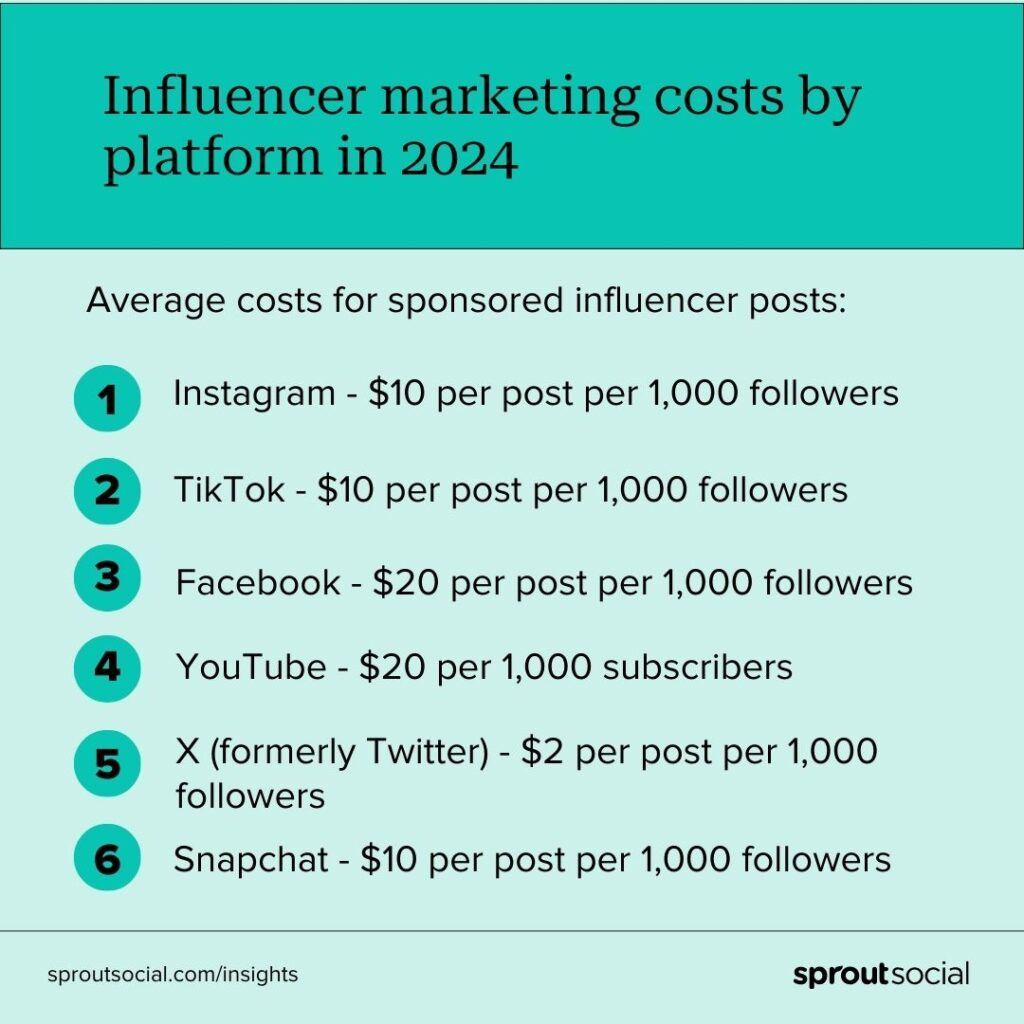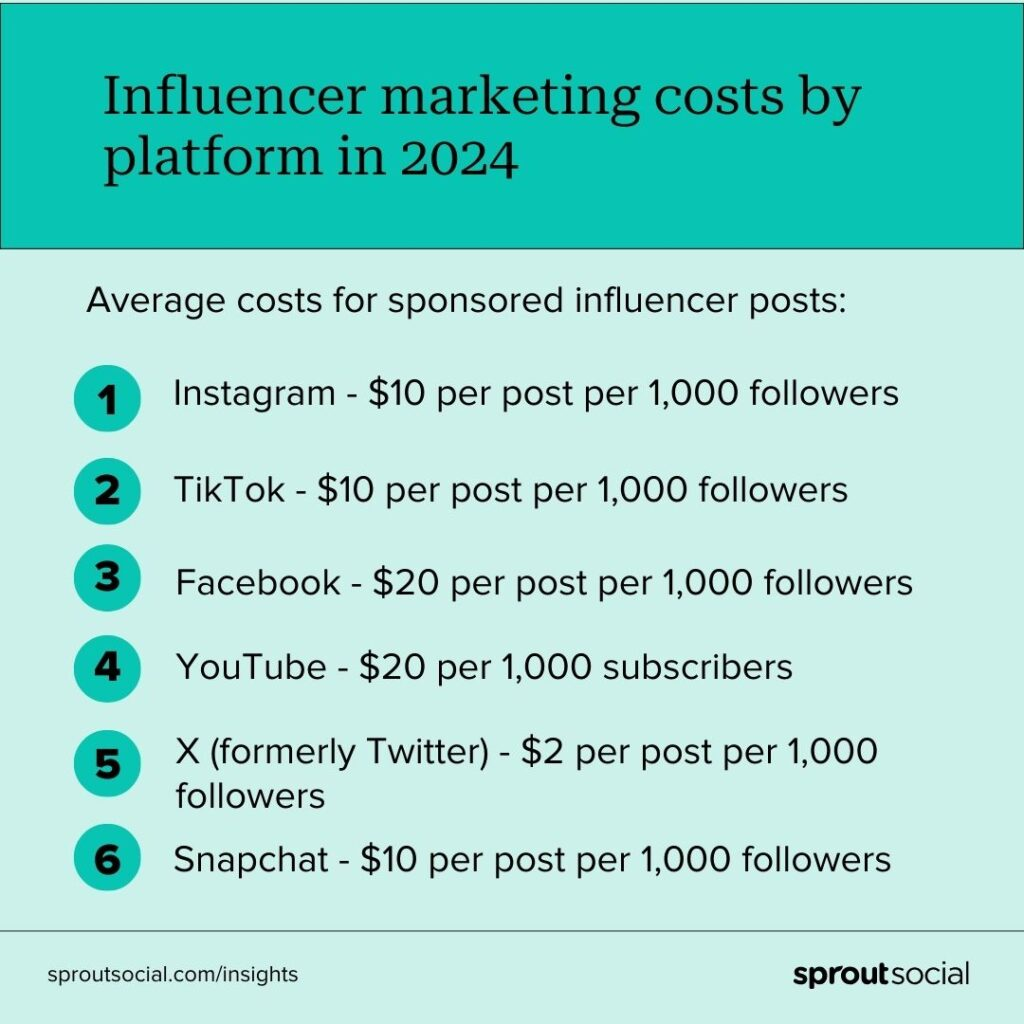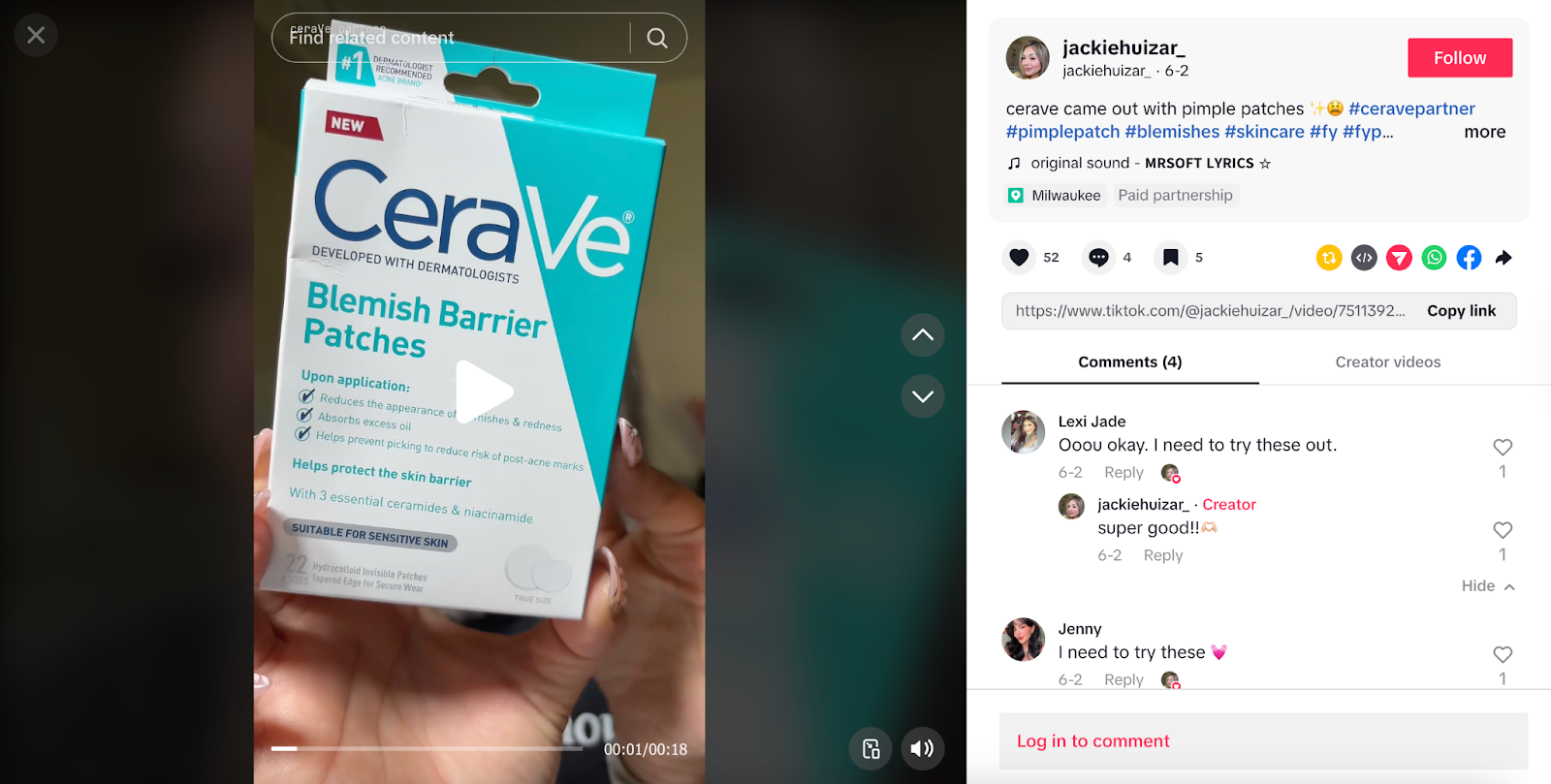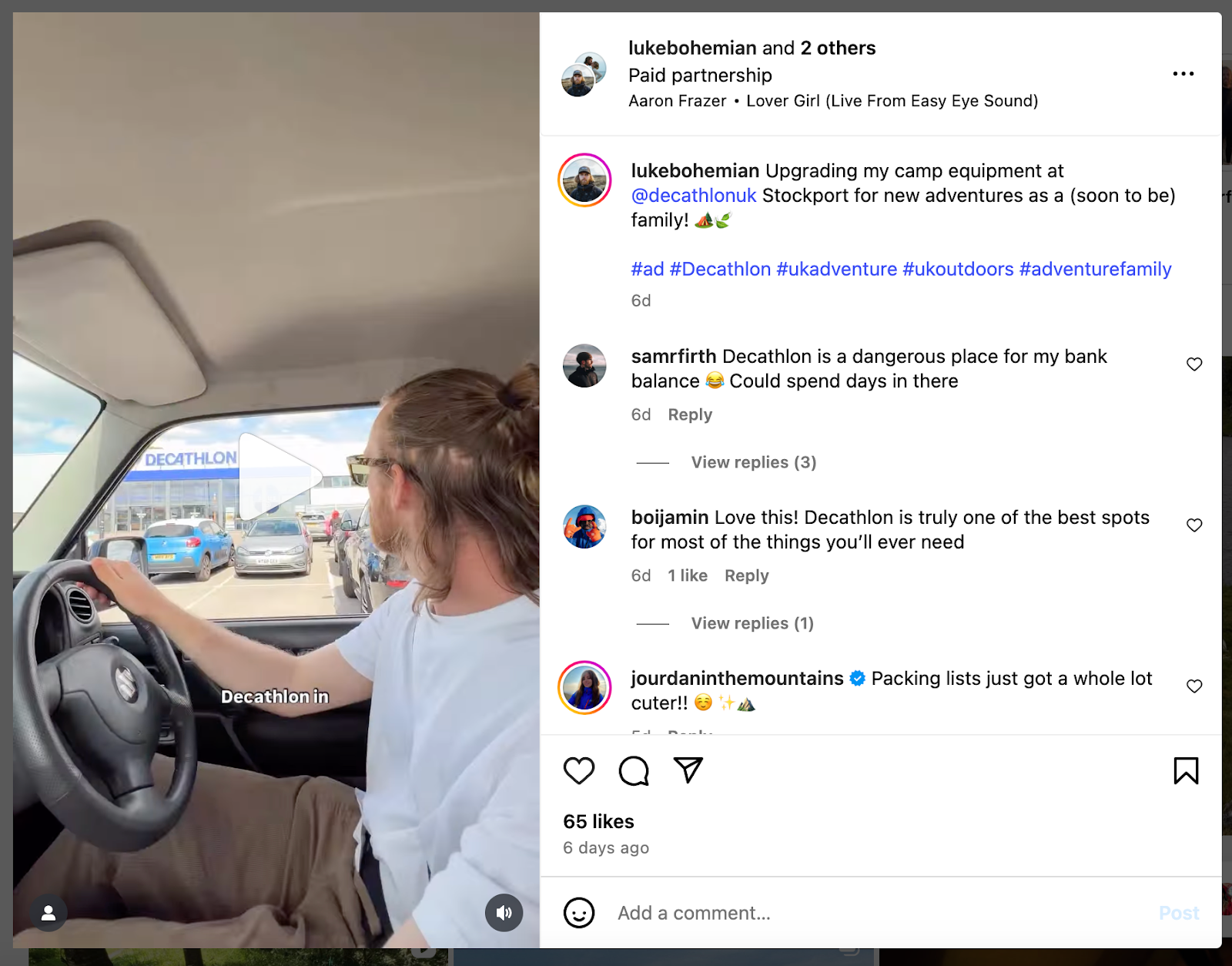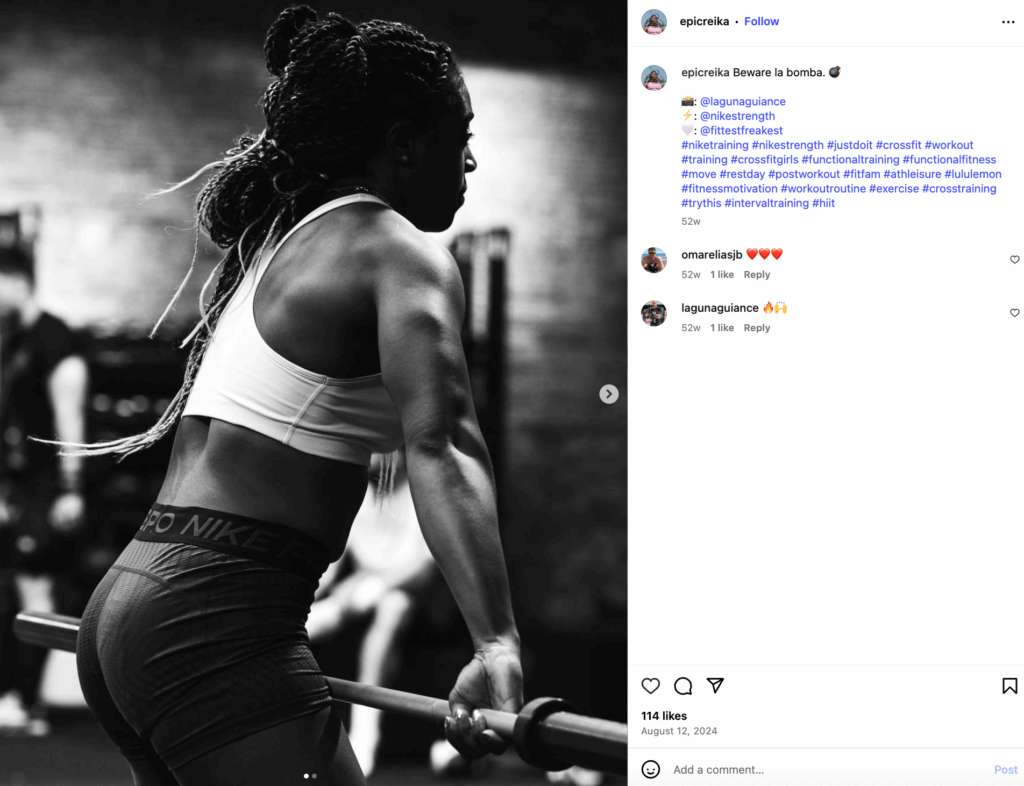There’s more than one way to be an influencer. And it doesn’t always start with a massive following. Influencer marketing is evolving and more brands are partnering with the smallest tier of them all: nanoinfluencers. These creators may only have a few thousand followers, but they attract highly engaged and loyal audiences who trust what they have to say.
It’s an exciting shift. But can smaller creators deliver the reach and ROI you’re looking for? Are they experienced enough to create quality, brand-aligned content?
In this article, we’ll break down what a nanoinfluencer is, the benefits of working with them and how to do it well.
What is a nanoinfluencer?
A nanoinfluencer is an influencer with between 1,000 and 10,000 followers. They’re usually everyday people who’ve built tight-knit communities around shared interests, values or lifestyles. Think: A local mom sharing skincare tips for women over 40 or a twenty-something gym fanatic posting high-protein meal prep ideas.
They may not have a whole production team behind them, but their relatability and authenticity set them apart. In fact, according to The State of Influencer Marketing Report, authenticity is the second most important quality consumers look for in influencers.
Whether they’re reviewing a new meal kit or shouting out a local brand, their posts often feel like a recommendation from a friend. And that kind of trust can go a long way.
Why nanoinfluencer marketing is a high-impact brand strategy
Smaller creators can lead to big results. It’s more common than you think. Let’s dig into why brands are finding value in nanoinfluencer marketing.
Engaged followers
Connection often matters more than clout with influencer marketing, and
that’s where nanoinfluencers shine.
With their smaller, more niche audiences, nanoinfluencers can maintain a level of interaction that larger creators often struggle to achieve. They can personally reply to comments and DMs and build real relationships with their followers. Their content feels less like a broadcast and more like a conversation.
According to a 2025 Influencer Marketing Hub Report, TikTok nanoinfluencers see an average engagement rate of 10.3%, compared to just 7.1% for mega-influencers. That’s a pretty big difference when you’re trying to drive action. On Instagram, the gap is even more pronounced. Most influencers on the network are nano-level, but their average engagement rate still outpaces larger accounts.
Think of it like hosting a dinner party versus a stadium concert. It’s easier to connect and have meaningful conversations in a smaller setting. That intimacy builds trust, and trust drives results.
Affordability and ROI
According to recent influencer pricing data, brands can expect to pay nanoinfluencers anywhere from $10 to $100 per post on networks such as Instagram, TikTok and Snapchat. Even YouTube partnerships, which usually come at a premium, can start as low as $20 per video.
Plus, since many nanoinfluencers are still early in their influencer careers, they tend to be more flexible with compensation and open to collaborations in exchange for free products or affiliate links. For brands testing the waters or running niche campaigns, this opens the door to working with multiple creators without blowing the budget.
Niche, highly relevant audiences
Nanoinfluencers tend to focus on specific topics, lifestyles or local communities. Because they serve such distinct niches, these influencers help brands reach highly relevant audiences who genuinely care about the content they share.
Brands like CeraVe frequently collaborate with smaller creators like @jackiehuizar_, a Wisconsin-based mom and beauty enthusiast with just over 9,000 followers. Her content is contextually relevant and speaks directly to the kind of audience CeraVe wants to reach.
This kind of alignment is a major advantage. Not just for global B2C brands, but for local businesses or interest-based companies looking to build stronger, more personal connections with their communities.
It also reflects what today’s consumers want. According to The State of Influencer Marketing Report, most consumers (especially Millennials, Gen X and Boomers) prefer following influencers who align with their personal values.
Higher conversions
Nanoinfluencers may not have massive audiences, but they do have deep ties that can translate into serious results for brands. Their recommendations feel genuine, not transactional, which makes people more likely to tune in and buy.
A 2024 study from Bocconi University looked at over 1.8 million purchases and found that nanoinfluencers deliver an impressive return: more than $1,000 in value from just $50 in free product. That’s a 20x return on investment.
How to work with nanoinfluencers
Working with nanoinfluencers takes a different approach than partnering with big-name creators, but that’s part of what makes it so effective. Here’s how to collaborate with them in a thoughtful and mutually beneficial way.
Set clear goals
Before launching a nanoinfluencer campaign, take a step back and ask: What does success look like?
Start by setting goals that align with your campaign’s purpose, whether that’s building awareness, boosting engagement or driving conversions.
Then identify the right metrics to track, like:
- Awareness: reach, impressions, views
- Engagement: likes, comments, saves, shares, DMs
- Conversions: link clicks, downloads, sign ups, affiliate code usage
- ROI: return on ad spend, conversion rate, sales
You might also factor in UGC potential if content repurposing is part of your strategy.
Be sure to share those goals with your partners as well. According to our Influencer Marketing Report, most influencers prioritize engagement, audience growth and link traffic, so include those metrics in your tracking and reporting.
Finally, create clear but flexible campaign guidelines. Treat your brief like a recipe, not a script. Provide direction, but leave space for the influencer to adapt the message in their own voice. That’s how you get content that performs well and feels real.
Find nanoinfluencers who align with your brand
When searching for and vetting potential nanoinfluencers, you need to look beyond follower counts and into the content itself. Are they already talking about topics that align with your brand? Do their values, voice and audience feel like a fit?
Because of their smaller size, nanoinfluencers might not show up in typical databases. That’s where tools like Sprout Social Influencer Marketing come in. With advanced discovery and evaluation features like AI-powered search and creator fit reports, Sprout helps you find the right influencers at scale.
Take Luke Bohemian, for example. He’s a UK influencer, snowboarder and adventurer who partnered with Decathlon UK to showcase baby-friendly camping gear to his 7,000+ engaged followers. As a soon-to-be dad and outdoor enthusiast, Luke’s campaign is super authentic to him and perfectly reflects Decathlon’s brand: active, family-oriented and grounded in everyday adventure.
Consider partnering with multiple nanoinfluencers at once to expand your reach and maximize impact. Sprout makes it easier to manage these collaborations with tools like Influencer CRM, modular workflows and streamlined approval processes.
Schedule a free demo and see Sprout’s Influencer Marketing tool in action.
Build relationships
Many nanoinfluencers don’t have managers or formal workflows, so how you approach them makes a big difference.
According to our Influencer Marketing Report, the top things all influencers look for in a partnership are brand value alignment, fair compensation and audience fit. That’s why it’s important to lead with a thoughtful, personalized message.
Start with a brand pitch that shows genuine interest in their content, highlights shared values and clearly outlines the opportunity. Be upfront about deliverables, timelines and compensation. Are you offering product seeding, affiliate links, discount codes or something else?
And if you find creators who are a great fit, don’t stop at a one-off campaign. Long-term partnerships allow influencers to regularly feature your brand, which builds audience trust and reinforces your message over time in a natural, authentic way.
Strong influencer management is key to keeping these relationships going. Offer support, share resources and maintain open communication throughout the partnership.
Collaborate on the campaign
Influencers know their audiences better than anyone, so a rigid brief can get in the way of authenticity (and stifle creativity). Our Influencer Marketing Report found that most influencers say they wish they were brought into the creative process earlier. So invite them in. Taking a flexible, collaborative approach helps your brand message land more naturally.
Start by providing clear but open-ended directions like brand guidelines, mood boards or example captions—not word-for-word scripts. Be upfront about review processes and timelines, but leave room for creators to bring their unique style and voice to the table.
For example, Nike collaborated with nanoinfluencer, fitness coach @epicreika, for their Icon Clash collection to reach a wider audience. @epicreika has done similar campaigns for other sports brands like Lululemon, Under Armour and Picsil.
Track engagement and measure success
With nanoinfluencer campaigns, focus on tracking key influencer marketing metrics like:
- Awareness (reach, impressions, views)
- Engagement (likes, comments, shares, saves)
- Conversions (link clicks, discount code redemptions, sales)
These numbers help you understand what’s working, what’s resonating and where there’s room to improve.
It’s also worth using social listening to track audience sentiment in real time. You’ll get a clearer picture of how people are reacting to your campaign as it unfolds.
Tools like Sprout Social Influencer Marketing make this easier by centralizing performance data. Use it to track individual creators or get a bird’s-eye view of overall results.
Pro tip: Don’t just track performance. Save it. High-performing posts make great assets for repurposing or even future paid campaigns.
Making the case for nanoinfluencer marketing
Nanoinfluencers are proof that you don’t need a million followers to make a big impact. They’re the friends whose product recs you listen to. The creator whose day-in-the-life feels real, not rehearsed. When brands tap into that kind of energy, good things happen.
Nanoinfluencer marketing helps you reach the right people, build trust, boost engagement and drive results, all without a huge spend.
Grab our free influencer marketing toolkit for customizable templates, pitch tips and campaign planning resources to help you find the right creators and launch with confidence.
The post How to leverage nanoinfluencers to increase engagement and ROI appeared first on Sprout Social.

